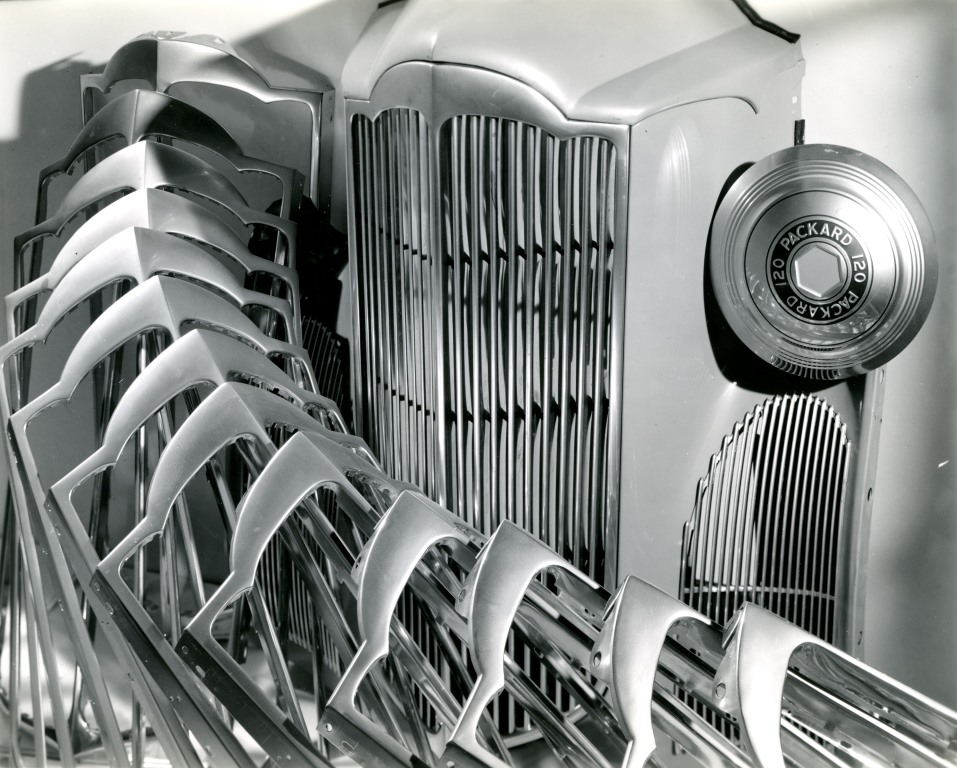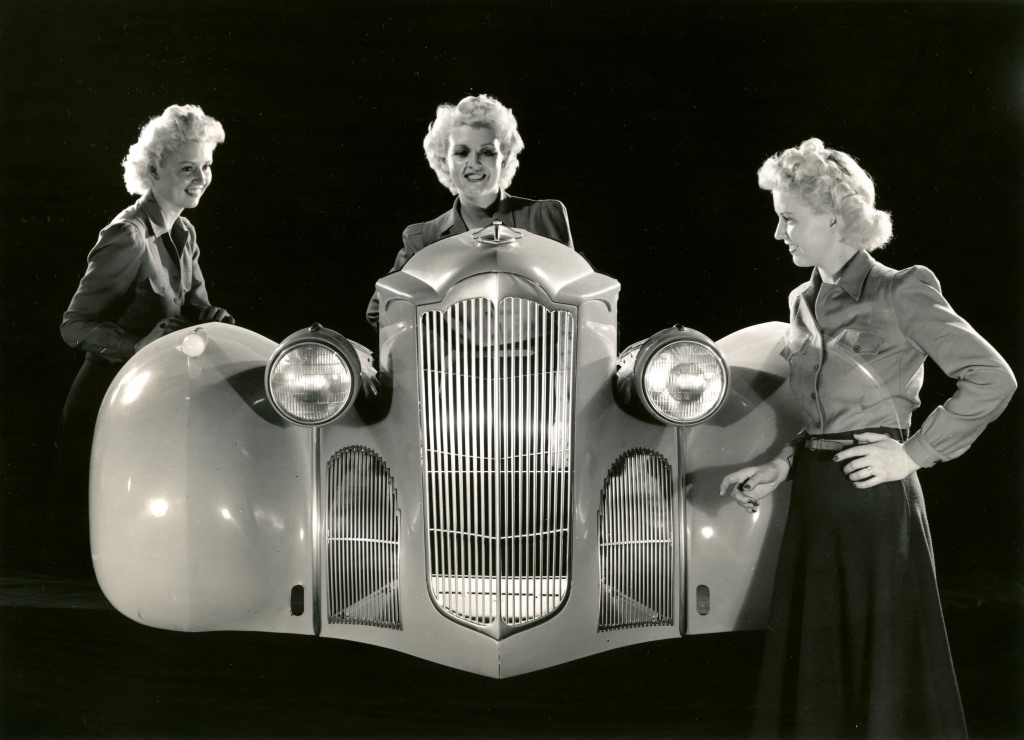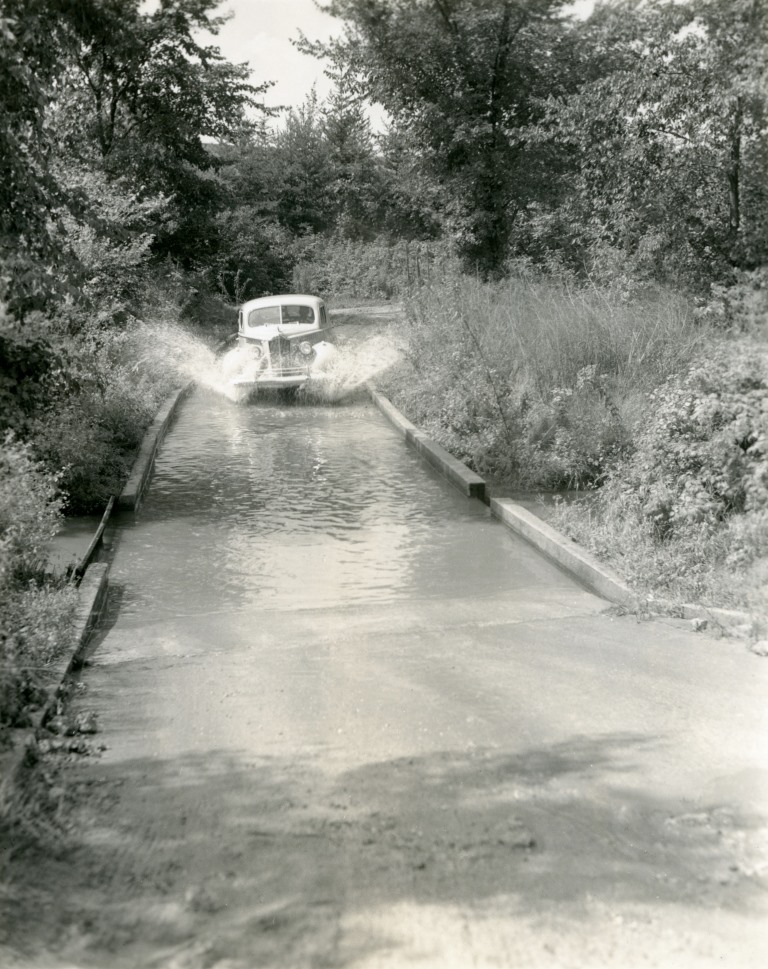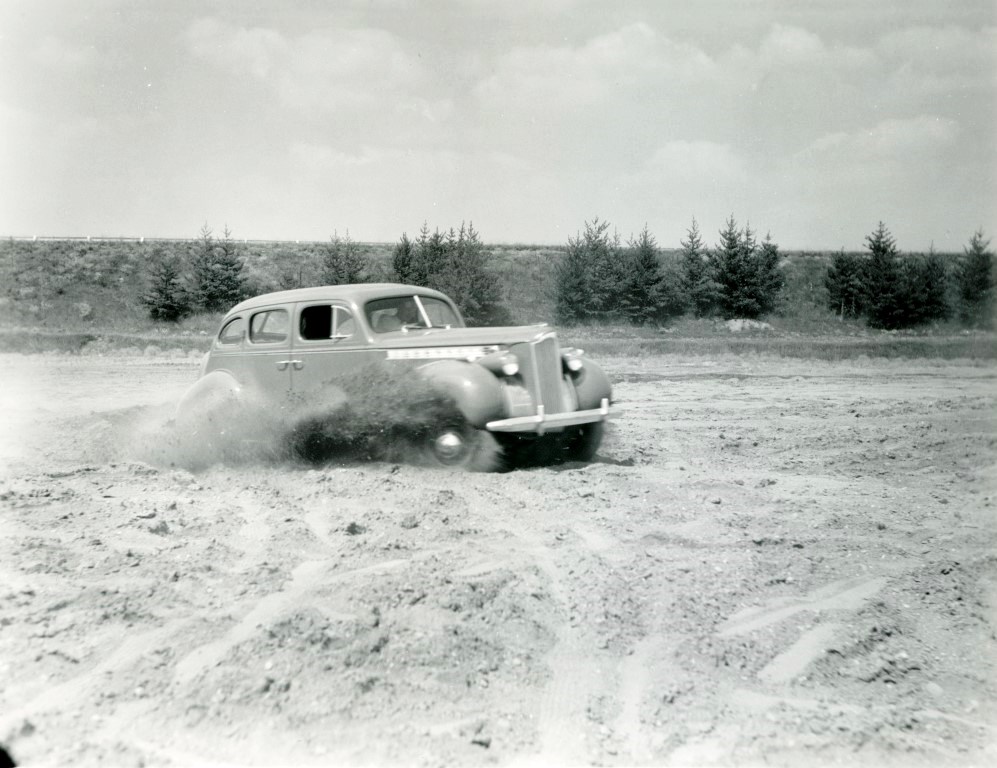"Ask the Man Who Owns One"

In 1902 J.W. Packard wrote the first hit car slogan “Ask the man who owns one,” which was used until the company’s demise in 1958. This slogan, and its ubiquity in Packard promotional materials, has been considered an early version of reference selling, or as it’s known today “buzz marketing.” This slogan, rather than seeking consumer approval, or spurring consumers to action, encourages recommendation. Let the cars and the satisfaction of its owners speak for themselves, it says.
This slogan was as much a part of Packard’s identity as a company as was its trademark front grille. Many of the photographs from this collection highlight the grille in a way that may seem a little strange out of context, but when understood through the lens of the Packard brand identity make more sense.
Packard’s advertising was handled by the ad agency Young & Rubicam from 1932 to 1951. Young & Rubicam created ads that highlighted the quality of Packard cars. Well-built, long-lasting and well-designed cars were the hallmark of the automaker, and what made it stand out from lower-priced, high-production cars made by other automakers during the same time period. Packard initially prided itself on building quality cars, rather than building to a price point. Packard had an exhaustive testing program and built a large proving ground in Shelby Township, to test its cars, which was another distinctive aspect of the company played up in the ads created by Young & Rubicam.
In the end, Packard failed for a complex set of reasons under a complex set of circumstances. There is no consensus, or single cause for the failure of the automaker that was once at the top of the luxury car market. Even after its zenith in the roaring 20s, when Packard introduced the 120, a mid-range automobile, its sales were high. Yet through a series of missteps and a dried-up luxury car market in its later years, Packard was unable to compete in the new era of low and mid-range vehicles. The evolution of the company from a prestige automaker to mass-market car company relying primarily on its past reputation is reflected in its advertisements. According to Arthur Einstein, author of “Ask the Man Who Owns One,” the ads mirrored the machine itself, they “never promised anything it couldn’t deliver” until the 1950s as both met their demise.
- Jessica Keener, Wayne State University Graduate Student




